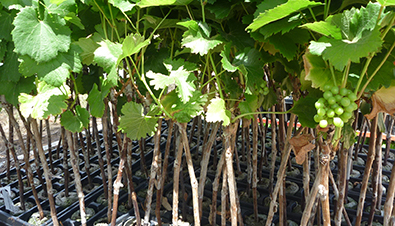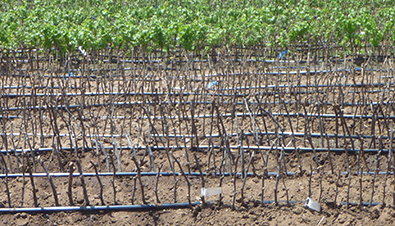Read the latest information on
Foot-and-mouth disease

The production nursery sector uses strict procedures to ensure only quality planting material is available for growers.
Almost anything moved onto your property can be a potential source of pests and diseases for your production areas.
You can minimise the biosecurity risks when introducing new planting material by implementing a few simple procedures to your routine.
Pests and diseases can be easily brought onto your property with inputs and planting material.
Rod Turner, General Manager at Plant Health Australia, says that propagation material should be ‘clean’ and, where possible, you should use only certified production nursery inputs.
“You might be tempted to take shortcuts or use a cheaper supplier. But it’s better to go for planting material – like vine cuttings for propagation – that is certified to be free from known pests and diseases,” said Rod.
“It’s not always possible to visually inspect planting material for diseases, which may lie dormant for some time before becoming an obvious problem. The only way to know if it’s ‘clean’ is to have it tested and analysed professionally.”

You might be tempted to take shortcuts or use a cheaper supplier. But it’s better to go for planting material – like vine cuttings for propagation – that is certified to be free from known pests and diseases
The production nursery sector uses strict procedures to ensure only quality planting material is available for growers. BioSecure HACCP provides a systematic approach to assess their biosecurity hazards and responsibilities and manage the identified risks.
To gain and maintain BioSecure HACCP certification, a business must be NIASA Accredited and undergo two independent audits on an annual basis to ensure the integrity of their BioSecure HACCP program is maintained.
You can benefit from the checks and controls of Biosecure HACCP used by nursery providers to ensure you don’t inadvertently introduce something onto your property.
“Don’t let someone else’s pest and disease problem become your problem. Once you receive stock, put it into quarantine,” said Rod.
Establish a quarantine area for stock coming in and make sure that you have a written procedure for staff to follow so that everybody has the same instructions.
Keep new plants and potting material away from production areas until you are sure they are free from pests and diseases.
Maintain a register of propagation material including budwood, seed supplies, cultivar, root stock, where when and how many were received, and where they were planted.
Keeping records of new materials will help determine the source of any new pests or diseases.
“In the short term, having written procedures and records helps you to decide immediate management options for commonly encountered pests,” said Rod.
Treating the new stock separately to remove pests is more cost effective than immediately introducing it to your production area and possibly having to treat larger areas or numbers of plants should problems arise.
Once planted, check newly planted areas for new or unusual symptoms to be sure they can be contained if found.
“In the longer term, keeping records will help you to identify patterns and trends regarding common pest and weeds entering your property. Remember to train your staff so they know what they are looking for.”
“It will also help to trace the origin of a new pest or disease incursion, increasing the chance of being able to eradicate it.”